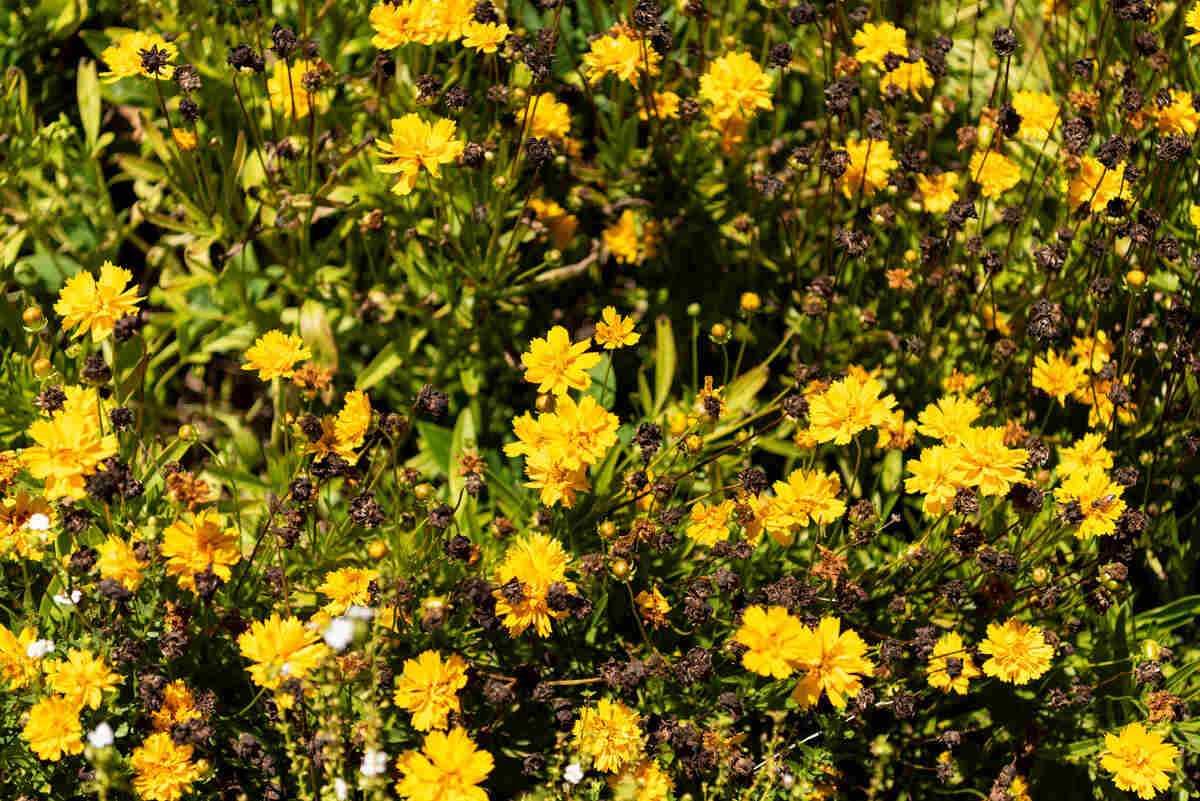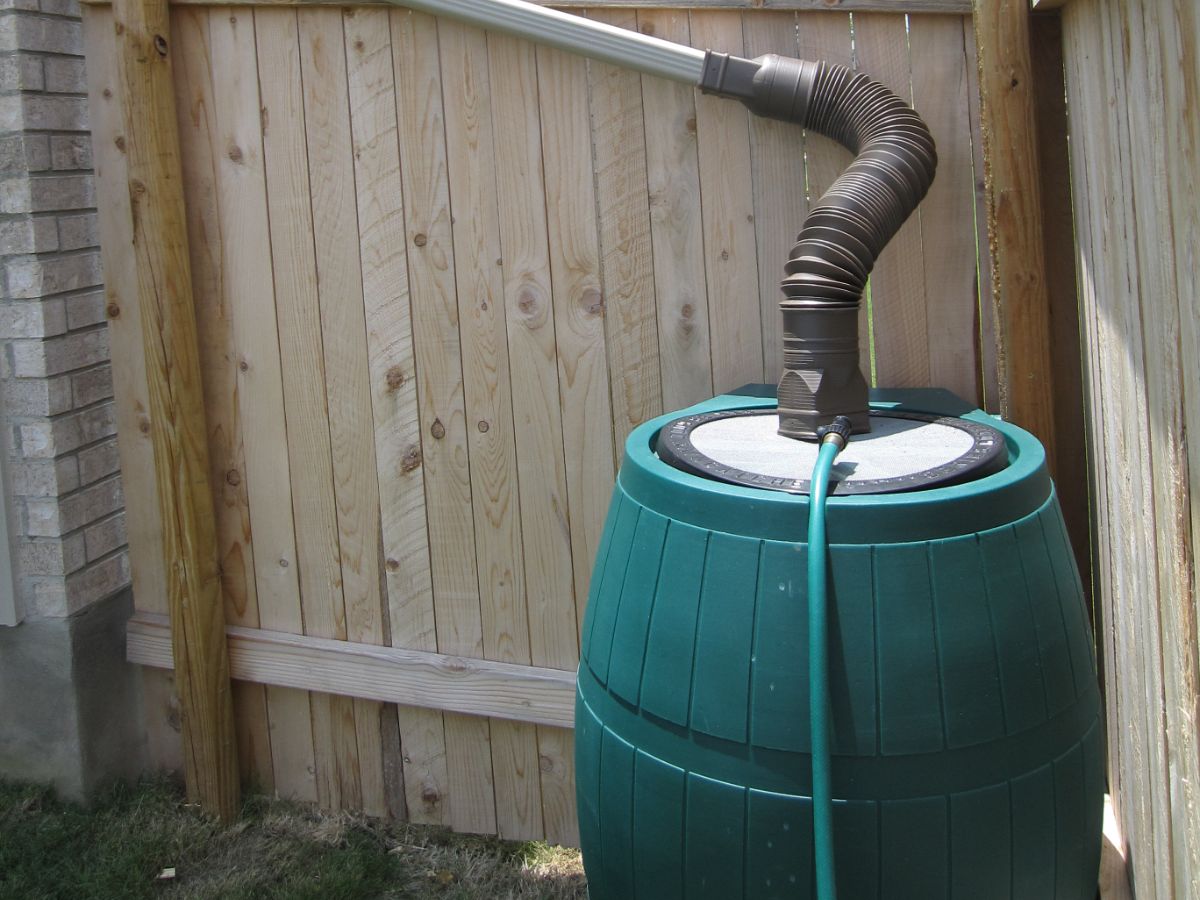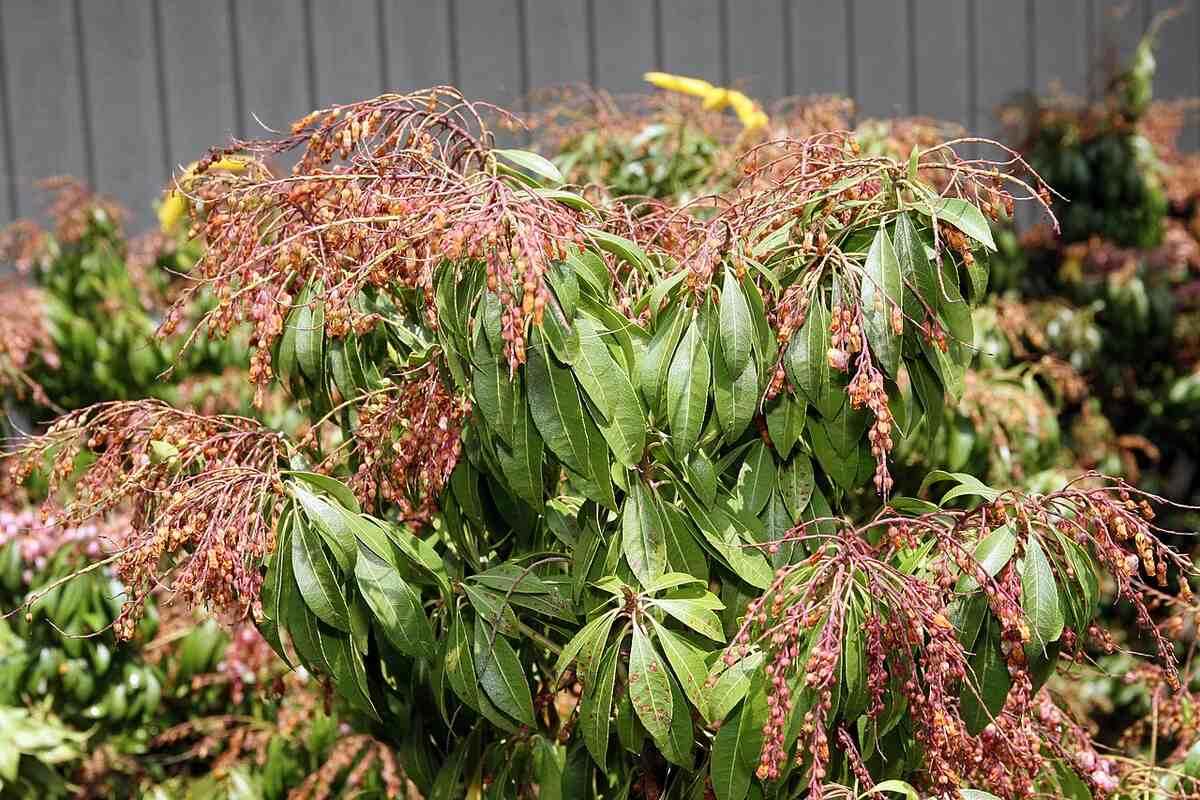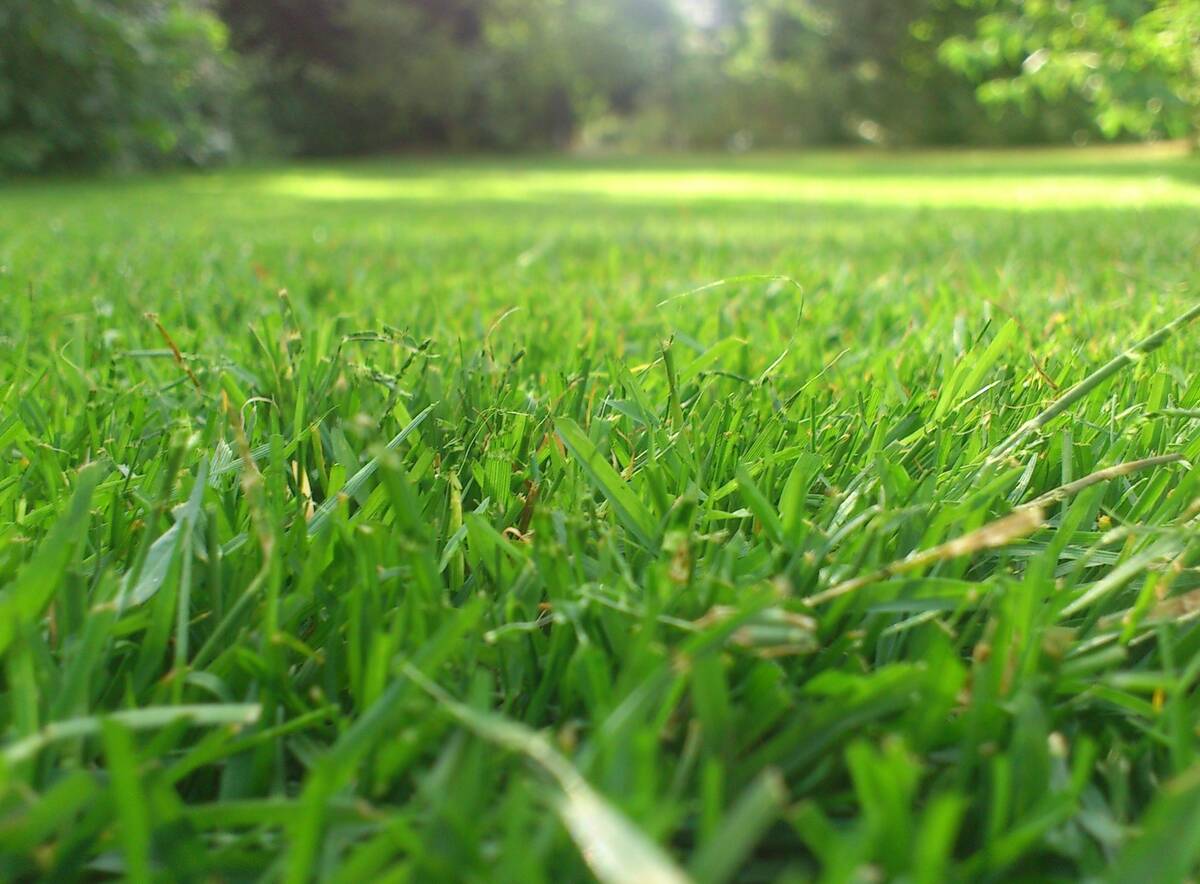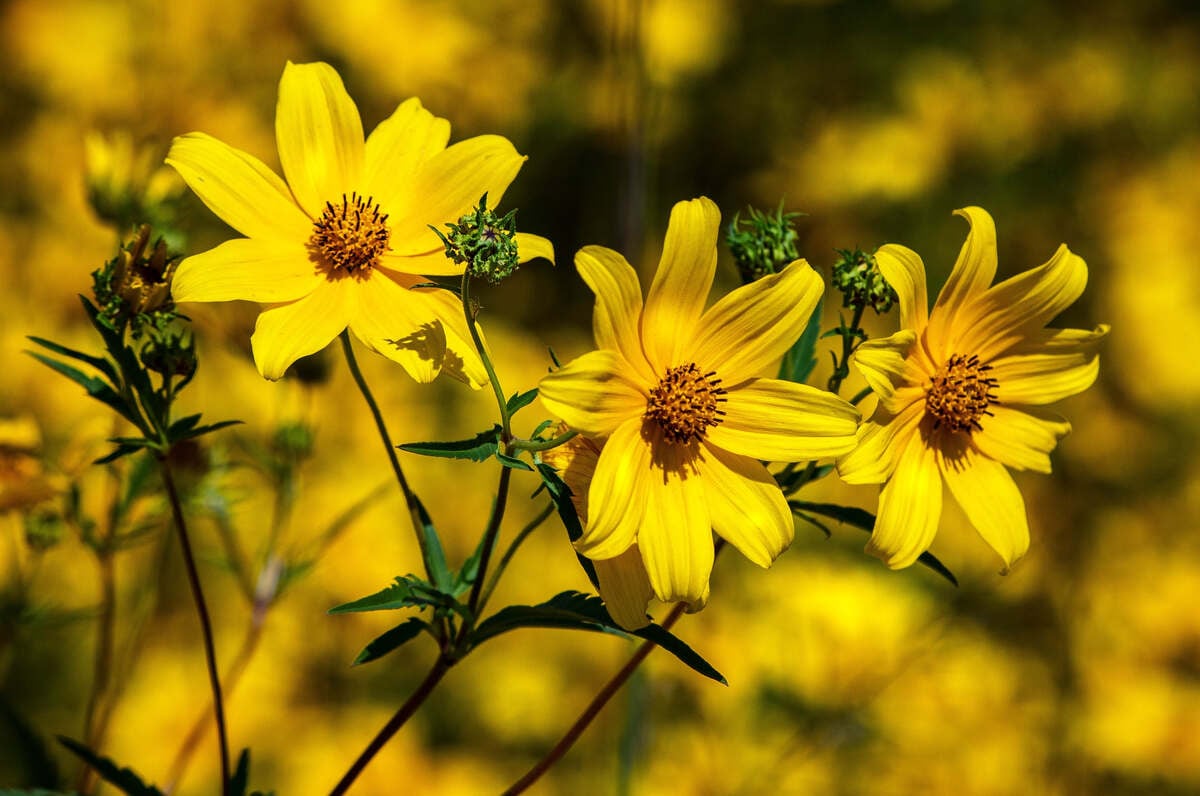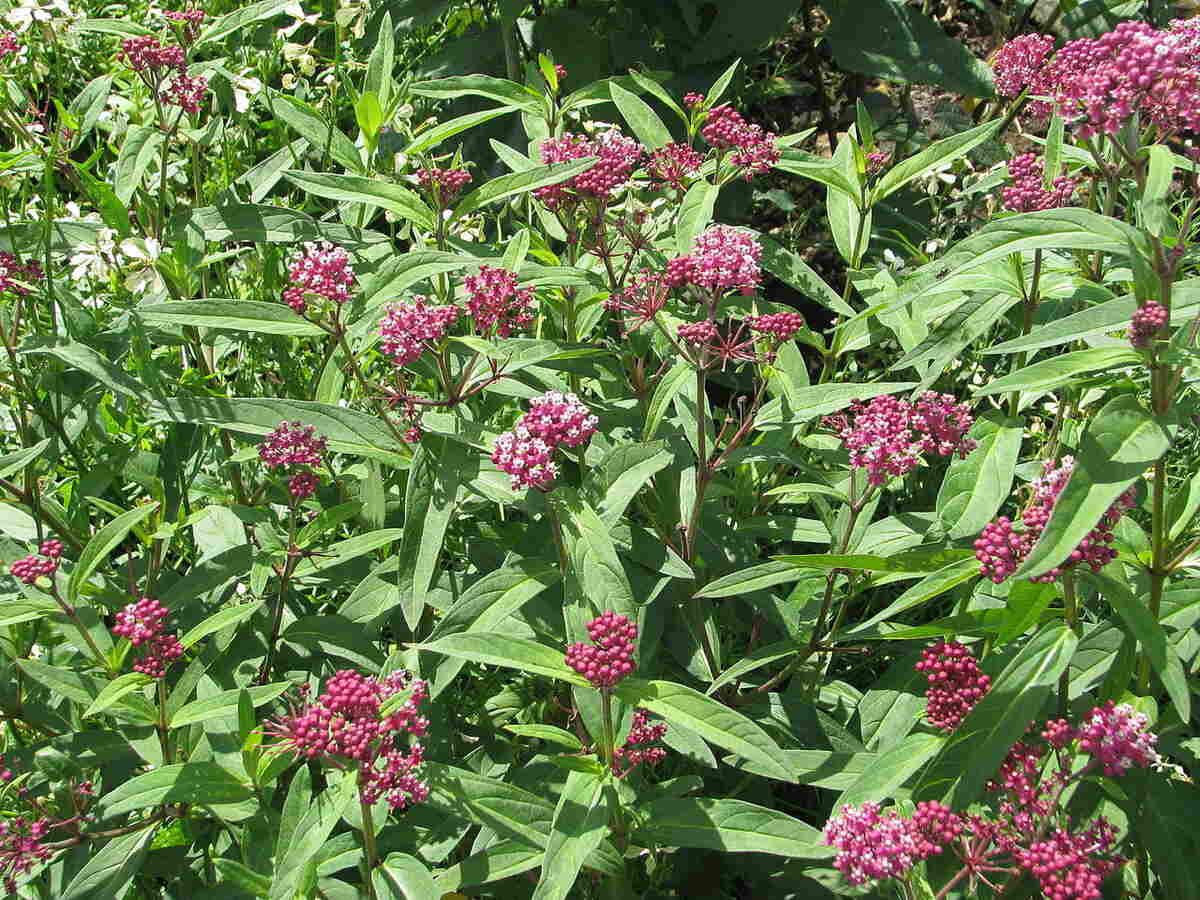
There are dozens of native plants naturally growing across Delaware’s roadsides, old fields, meadows, and stream banks that can look amazing in your home garden. Delaware native plants offer food and shelter for native wildlife, conserve water, are easy to care for, and are also crazy beautiful, growing in various colors, shapes, and sizes.
To name just a few: Dogwood is a legend. Dwarf fringe trees seem stolen from a fairytale. The swamp azalea has both a stunning beauty and a lovely perfume.
Unlike non-natives, Delaware’s indigenous trees, shrubs, and flowering plants thrive mostly with local rainfall and the land’s natural resources. They rarely need fertilizers and are resilient to diseases and pests. Low-maintenance, great looks, a plethora of species to choose from–what’s not to love about native plants?
If you’re looking for native plants to enrich your Delaware garden (brilliant idea!), here is a list of 19 examples that will conquer your heart.
19 Native Plants for Your Delaware Garden
If you want your Delaware garden to be drop-dead gorgeous, one secret ingredient is layers! It’s all about mixing native plants in all shapes, sizes, and textures, and we’ve handpicked 19 awesome options and added them to this native plants list for you.
We’re talking trees, shrubs, ground covers, and wildflowers, all ready to transform your garden into a lively paradise. So get ready to plant like a pro and watch your garden come to life!
1. Witch Hazel (Hamamelis virginiana)
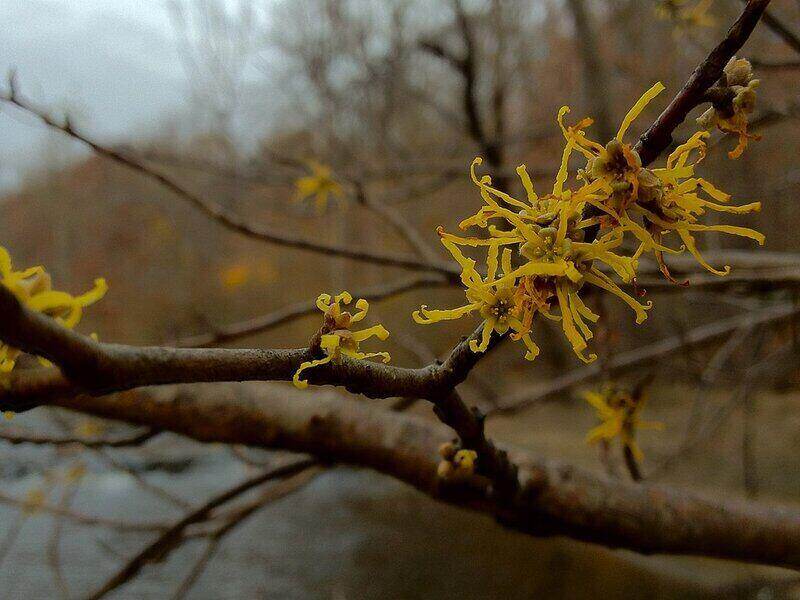
The Delaware Nursery and Landscape Association picked its favorite woody plant for 2022! It’s witch hazel, and boy, is it special. This native shrub has a totally funky look that’ll make your garden stand out.
Its flowers are like tiny confetti pieces, with four ribbon-shaped petals in bright yellow shades. And get this: It’s like the ultimate party guest because it’s the last one to bloom in Delaware. You’ll even enjoy colors in a frozen January in some years.
- Type: Perennial deciduous shrub or tree.
- Best features: Uniquely shaped flowers in bright shades of yellow blooming late in the season.
- Blooming time: October-December.
- Size at maturity: 10 to 20 feet tall and wide.
- Sun exposure: Full sun to partial shade.
- Soil: Grows in loamy and silt soils, moist but well-drained.
- USDA hardiness zone: 3 – 9.
Where to buy
2. Flowering Dogwood (Cornus florida)
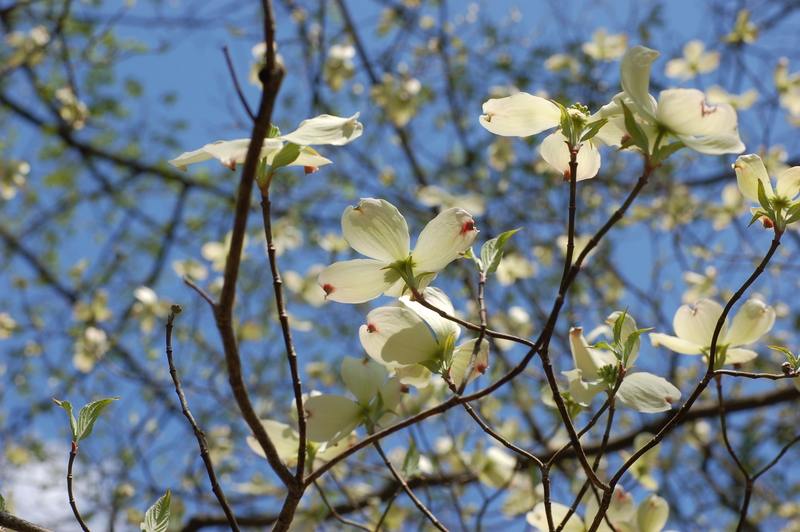
Thriving in the coastal and piedmont terrains of Delaware, dogwood is one of the most spectacular flowering trees across the state. In the spring, it blooms green flowers surrounded by large white or pink bracts, so numerous and dense you can barely see the branches.
Come summer, it’s snack time for all the best local birds. The tree grows these red fruits that attract fancy feathered friends like cardinals, robins, and mockingbirds. When autumn arrives, get ready for a color explosion. The dogwood turns its leaves into a fiery red outfit. It’s like Mother Nature went, “Boom! Look at this scarlet beauty!”
It’s a gorgeous addition to your yard year-round and easy to care for. Even though the dogwood is the official tree of Virginia, it feels right at home in Delaware. Once this tree settles in, it’s pretty low-maintenance.
- Type: Trees and shrubs.
- Best features: Beautiful white or pink blooms during spring and vibrant red foliage in the autumn.
- Blooming time: March-June.
- Size at maturity: 20 to 30 feet tall and wide.
- Sun exposure: Full sun and partial shade.
- Soil: Prefers well-drained, acidic soil with organic matter, moist to dry.
- USDA hardiness zone: 5 to 9.
Where to buy
3. Sweet Goldenrod (Solidago odora)
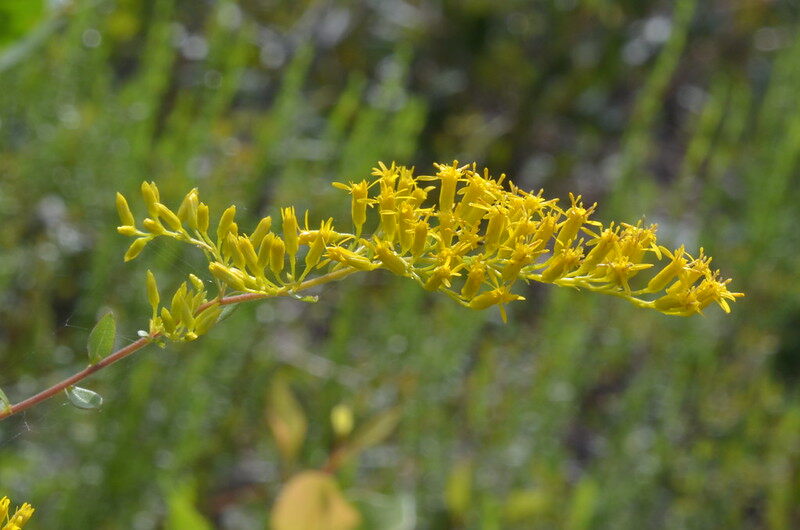
Wearing the hat of the official state herb of Delaware since 1996, the sweet goldenrod is more than a beautiful face. It hides valuable medicinal properties, and its dried leaves and flowers make a fragrant tea with an exotic licorice flavor.
Goldenrod enjoys moisture, and its natural habitat spreads along the coast of Delaware and near the edges of marshes and thickets. It blooms clusters of tiny, bright yellow flowers from late summer to mid-fall – an open buffet for bees, butterflies, hummingbirds, and other local pollinators.
It’s also not the only one of its kind to enjoy the local climate. Other varieties you can turn to are the Canada Goldenrod (Solidago canadensis) and the Early Goldenrod (Solidago juncea)
- Type: Perennial forb (aka flowering plant).
- Best features: Bright clusters of fragrant yellow flowers blooming from early summer to mid-fall.
- Blooming time: July to October.
- Size at maturity: 1 to 6 feet tall.
- Sun exposure: Full sun to partial shade.
- Soil: Grows best in dry to medium-wet soils. Tolerates droughts and poor soil. Avoid planting in overly rich soil or adding fertilizers, which leads to leggy plants.
- USDA hardiness zone: 2 to 8.
Where to buy
4. Swamp Milkweed (Asclepias incarnata)
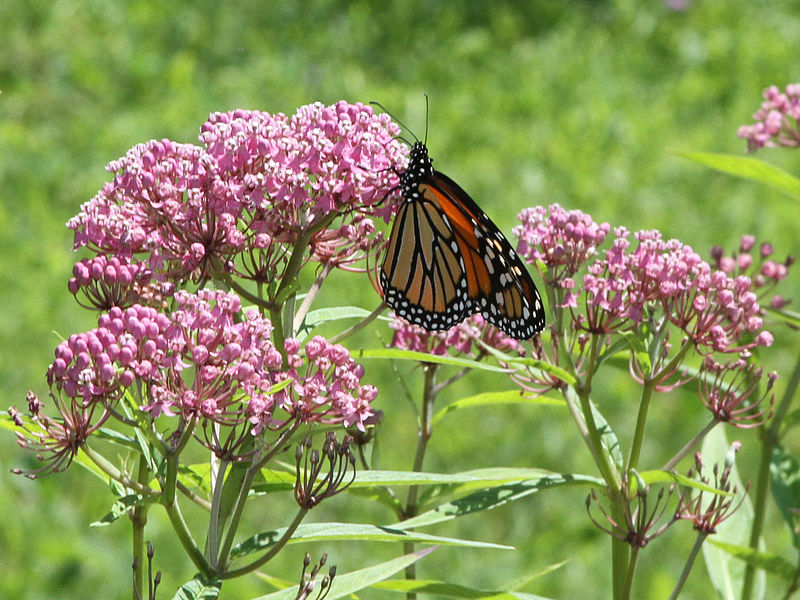
This plant is like a superhero for wetland areas and gardens that get flooded sometimes. It loves soggy soils and muddy spots and feels at home in yard ponds and water gardens. When this plant blooms, it explodes in clusters of small flowers that smell amazing.
They come in shades of pink to purple and are full of sweet nectar. All the cool local insects love it, but it’s especially cherished by the monarch and queen butterflies that hang around swamp milkweeds in the summer. While it loses its leaves during winter, it still keeps its dormant stems, a precious and comfy shelter for our friendly bugs during the cold season.
Sharing its beauty and charm, two other varieties can take root in your garden: the Common Milkweed (Asclepias syriaca) and Butterfly Milkweed (Asclepias tuberosa).
Warning! Young shoots, seed pods, and leaves are edible cooked but poisonous if ingested raw.
- Type: Perennial forb (aka flowering plant).
- Best features: White, light pink to light purple flower heads with a perfume similar to cinnamon.
- Blooming time: July – August.
- Size at maturity: 4 to 6 feet tall.
- Sun exposure: Full sun to partial shade.
- Soil: Often found near lakes, ponds, waterways, and swamps, it prefers moist soils, neutral to slightly acidic.
- USDA hardiness zone: 3 to 9. It can withstand temperatures as low as -38°F.
Where to buy
5. Arrowwood ‘Eskimo’ (Viburnum ‘Eskimo’)
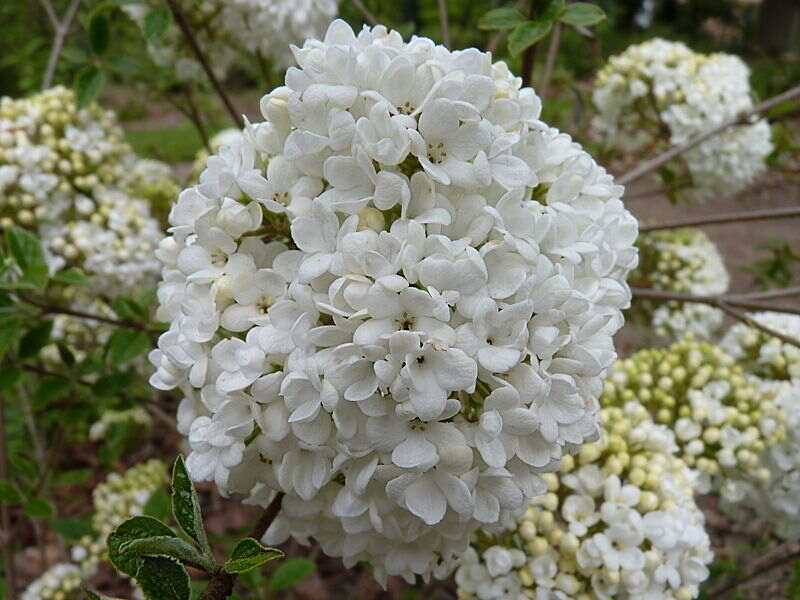
Happy in the ground and large containers, the viburnum Eskimo is a compact, slow-growing shrub you can fit easily into your landscape design, even with a small garden. It has glossy, dark green leaves that add elegance to your outdoor space and blooms snowballs of pure white flowers in early May.
But here’s the thing—these shrubs can be a bit sensitive. They don’t like temperatures below 50 degrees Fahrenheit. So, plant them in your yard after Delaware has had its last frost. Now, the viburnum Eskimo is versatile, too. You can use it as an accent plant to add some pizzazz or create hedges and borders. It’s like a multitasking shrub, ready to bring some charm to your outdoor haven.
- Type: Semi-evergreen shrub.
- Best features: Ball-shaped clusters of white flowers blooming in late spring.
- Blooming time: May-June.
- Size at maturity: 4 to 5 feet tall and wide.
- Sun exposure: Full sun to partial shade.
- Soil: Grows best in heavy loam soils with proper watering.
- USDA hardiness zone: 6 to 8.
6. Eastern Redcedar (Juniperus virginiana)
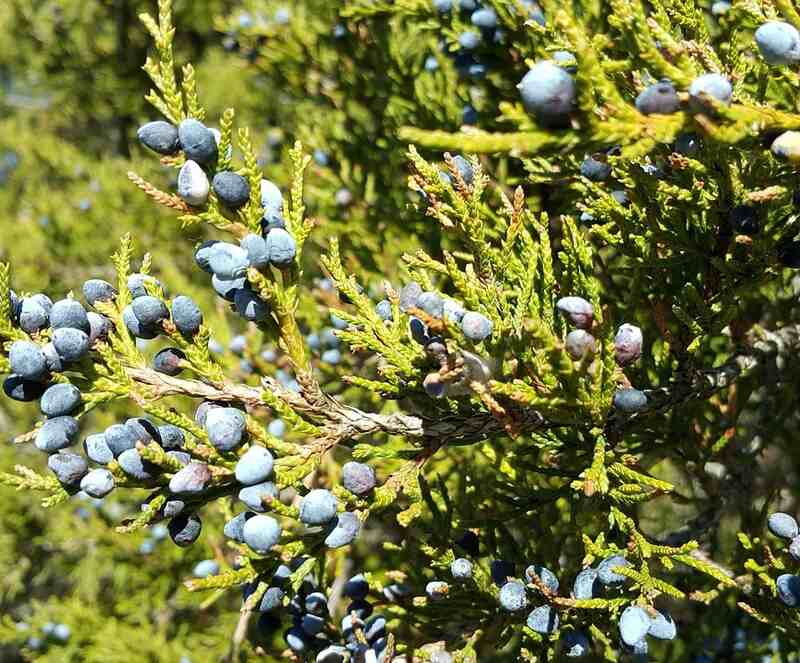
The Eastern redcedar, although not a real cedar but a juniper, is a tough evergreen tree that provides food and homes for many animals. It’s the only juniper that naturally grows in Delaware.
This tree can handle dryness, hot weather, and cold temperatures well, and it grows about 1 to 2 inches yearly when exposed to plenty of sunlight. People often use it in landscaping as a windbreak because of its compact, pyramidal shape and always-green leaves.
Warning! Avoid planting near the house since it can catch fire faster than other trees.
- Type: Perennial evergreen tree.
- Best features: Scale-like fragrant foliage ranging from gray-green to blue-green and blue-purple berries.
- Blooming time: April – May.
- Size at maturity: 30 to 60 feet tall and 8 to 20 feet wide.
- Sun exposure: Full sun to partial shade.
- Soil: Grows in alkaline or acidic soils where soil pH ranges from 4.7 to 7.8. Prefers moist, deep, well-drained soils but also grows on shallow rocky terrains.
- USDA hardiness zone: 2 to 9.
Where to buy
7. Red Maple (Acer rubrum)
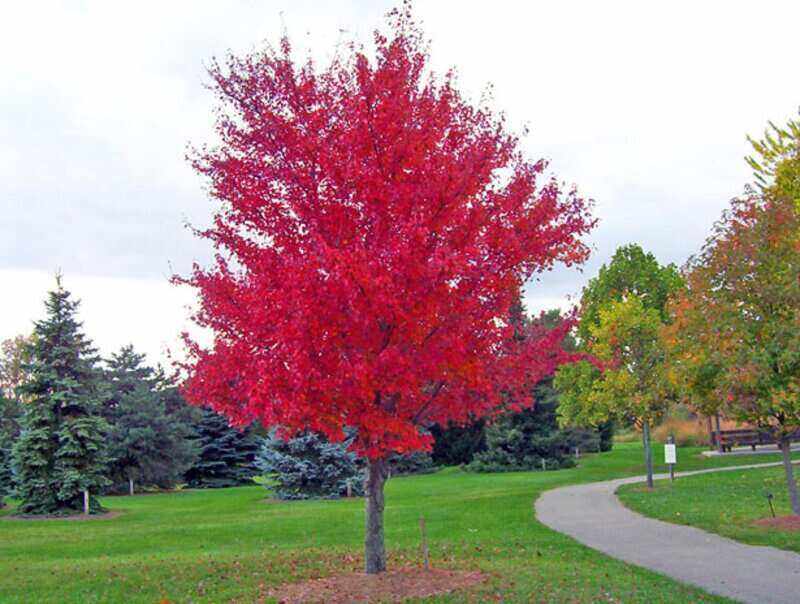
Delaware’s got some wet soil, thanks to its coastal vibes. But that’s perfect for the red maple! These trees love soggy conditions, so if you’ve got a yard with wet spots or occasional floods, they’re your go-to greenery.
Like delicate furry balls, red flowers pop up on the red maple in early spring, attracting beneficial insects to buzz around your garden. The broad, rounded canopy gives blissful shade during the summer, and when fall rolls around, it’s a blast! All the leaves turn into a fabulous yellow, orange, and red fashion show.
If your garden has the space to let red maples grow to their full glory, go for it! It’s like giving a big green thumbs-up to the local ecosystem while turning your outdoor space into a beautiful and comfy haven. Nature and chill vibes, all in one.
- Type: Deciduous perennial tree.
- Best features: Colorful foliage turning into a vibrant yellow, rust-orange, and purple mass during fall.
- Blooming time: March – April
- Size at maturity: 30 to 90 feet tall and 40 feet wide.
- Sun exposure: Full sun to light shade.
- Soil: Grows in moist, acidic soil and tolerates a variety of soil types and also poor drainage.
- USDA hardiness zone: 3 to 9.
Where to buy
8. Canadian Serviceberry (Amelanchier canadensis)
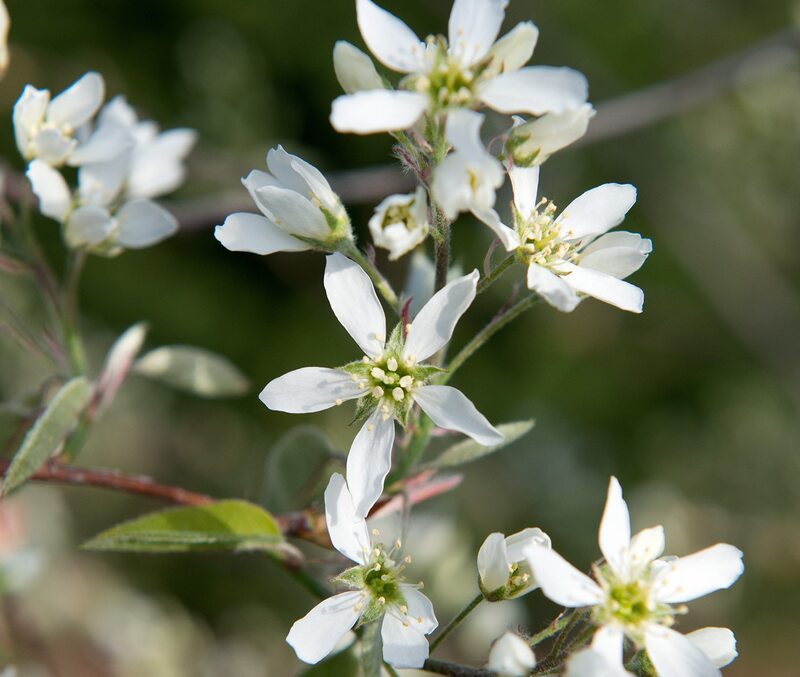
When spring rolls in, the Canadian serviceberry puts on a flowery show that’s a hit with bees and butterflies. Its delicate white blooms are like a magnet for pollinators. But wait, there’s more! After the flowers, you get these cute little berries that ripen in early summer. They’re so tasty that Delawareans love using them to whip up lip-smacking jams and desserts.
Its spring leaves also stand out, wearing a fancy bronzy color. As summer takes over, they go green and blend in with the crowd. But, when fall arrives, they put on a dazzling display of yellow, orange, and red shades and suddenly become the main event in your garden.
It’s not only the looks that make it easy to love! This tree’s branches are so dense that they’re like a five-star hotel for birds, offering cozy shelter and prime real estate for building nests. It’s also a resilient one when it comes to pests and diseases. So, if you’re looking for a reliable and sustainable choice for your yard, this tree is a keeper.
- Type: Deciduous tree or shrub.
- Best features: Beautiful flowers, decorative foliage, and a moderate growth habit make it suitable as an accent plant, screen, or hedge in various residential landscapes.
- Blooming time: March-May, before leaves grow.
- Size at maturity: 15 to 25 feet tall and 15 to 20 feet wide.
- Sun exposure: Full sun, but can tolerate some shade.
- Soil: Moist, well-drained soils. It prefers loamy or sandy soils with a slightly acidic to neutral pH (around 5.0 to 7.0).
- USDA hardiness zone: 3 to 8.
Where to buy
9. American Plum (Prunus americana)
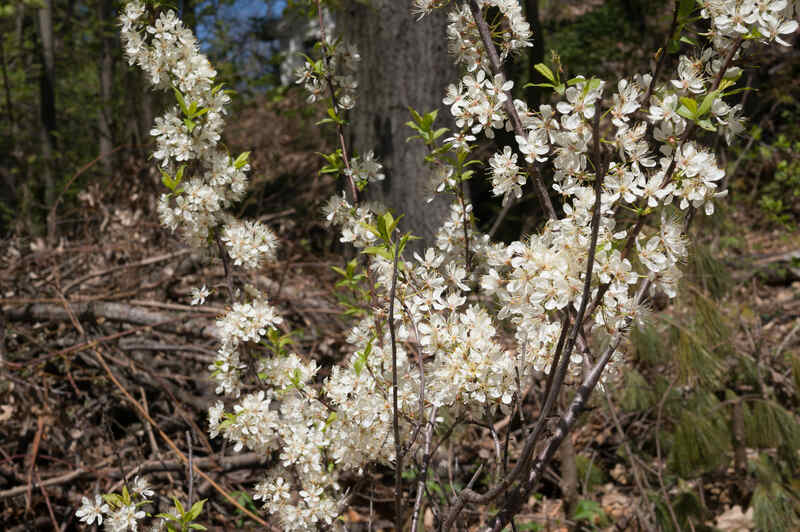
Also known by the common name of “Wild Plum,” this little fella can be nurtured like a small tree or a shrub to fit your garden’s style. No matter how you shape it, those branches fill with tasty treats each summer like clockwork. From August to September, its fruits turn a bold, bright red and are ready for eating, fresh or blended in jellies and mouth-watering pies.
As for its looks, don’t let the short trunk fool you. It’s just making space for the wide crown that blooms in a dense mass of flowers shading the ground during spring. Most years, it’s like scented white clouds float on your property. With five stars on both looks and goodies, it’s hard to ignore this one when planning the garden.
Warning! American plum has thorns or prickles, so be careful when you pick the fruits.
- Type: Perennial deciduous shrub or small tree.
- Best features: Beautiful, large, scented white flowers and sweet, juicy fruits that ripen in late summer.
- Blooming time: March-May.
- Size at maturity: 6 to 12 feet tall and wide.
- Sun exposure: Sun, partial shade, and full shade.
- Soil: Moist, rich, well-drained loam and sandy soils with a pH of 6.8 to 7.2.
- USDA hardiness zone: 3 to 8.
Where to buy
10. Swamp Azalea (Rhododendron viscosum)
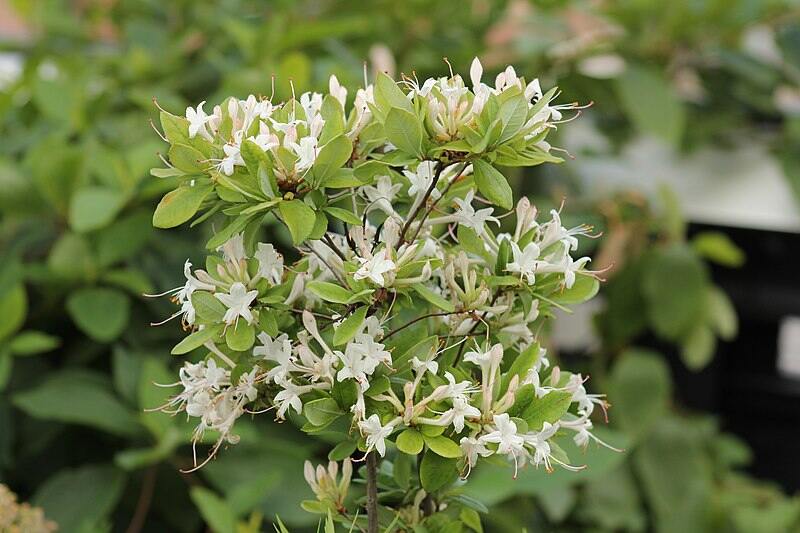
Got a nose for something sweet? Meet the swamp azalea, also known as Rhododendron viscosum. Plant this deliciously fragrant shrub near a patio, a deck, or under your living room windows. You’ll have a scented breeze whenever you step outside.
This little wonder blooms with small clusters of white flowers from late spring to early summer. It fills the air with a soft clove-like scent that gets more intense in the evening.
The dark green leaves of this azalea are thick, shiny, and look great all year round. When fall comes, they go all out with intense shades of yellow, orange, and purple. Your yard will be the envy of the neighborhood with those vibrant hues hanging around.
Warning! Swamp azalea is highly toxic for cats and dogs.
- Type: Deciduous shrub.
- Best features: Highly fragrant flowers and colorful foliage in the fall.
- Blooming time: May-July.
- Size at maturity: 3 to 5 feet tall and wide.
- Sun exposure: Thrives in light shade. Direct sun can scorch the leaves if you fail to keep the soil moist.
- Soil: Prefers acidic, moist, well-drained soil, rich in organic matter, but can tolerate poor drainage and periodic flooding.
- USDA hardiness zone: 3 to 9.
Where to buy
11. Black-Eyed Susan (Rudbeckia hirta)
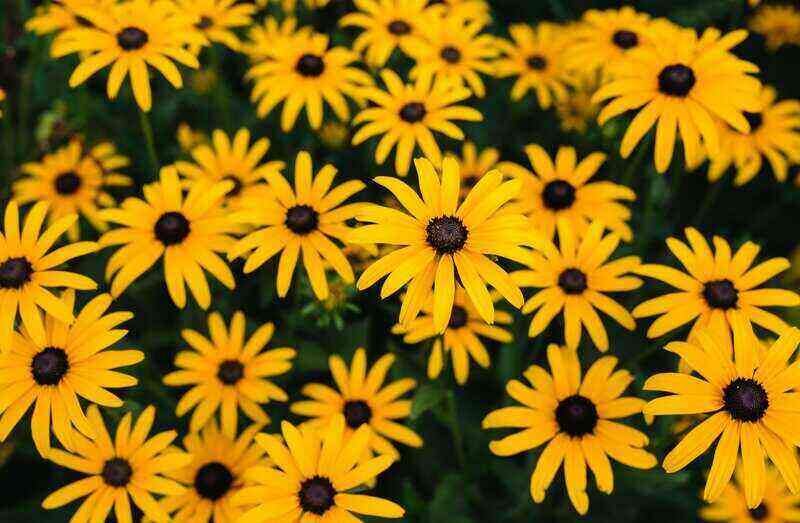
If you’re into that cottage or pollinator garden vibe, we’ve got just the plant for you: the black-eyed Susan. It’s a herbaceous beauty native to eastern and central North America. And guess what? This plant is as easy as pie to grow. No green thumb is required!
During summer, it puts on a daisy-like flower show. Imagine vibrant yellow petals like little rays of sunshine, and in the center, there’s a cone that looks like chocolate. But it’s not for us to eat. It’s full of nectar that bees, butterflies, and songbirds go crazy for.
Plant black-eyed Susans in groups for the best visual impact. They’ll create a stunning display that’ll make your garden the envy of all. And here’s a pro tip: give them enough space to spread their seeds.
- Type: Biennial or short-lived perennial wildflower.
- Best features: Striking daisy-like yellow flowers that keep blooming until mid-fall.
- Blooming time: June-August.
- Size at maturity: 2 to 3 feet tall and 1 to 2 feet wide.
- Sun exposure: Full sun.
- Soil: Thrives in dry to moist, well-drained soils rich in organic matter.
- USDA hardiness zone: 3 to 7.
Where to buy
12. Dwarf Fringe Tree (Chionanthus virginicus)
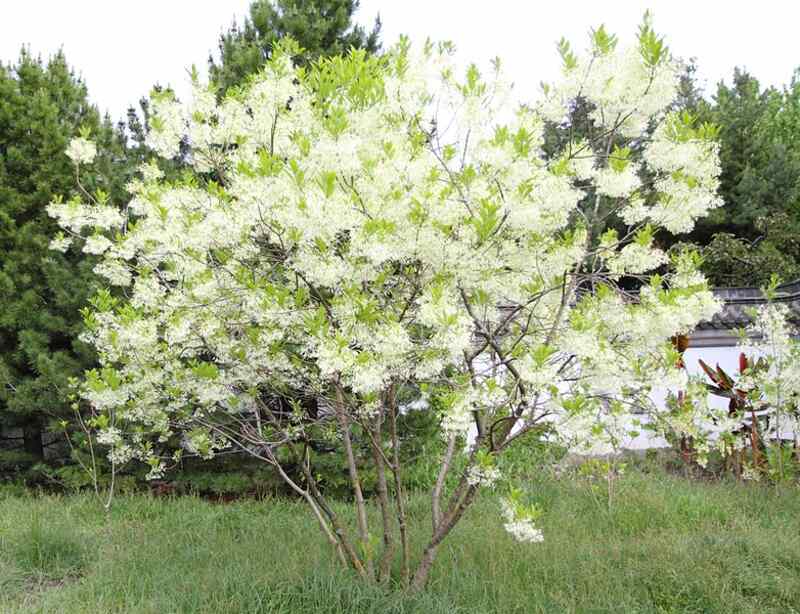
As you drive north of Wilmington on I-95 to the Pennsylvania state line in the summer, you’ll spot the delightful dwarf fringe tree showing off its airy white flowers. This tree isn’t bothered by the pollution in the city and often grows on roadsides. It’s a tough cookie and thrives in the urban landscapes of Delaware and southeastern Pennsylvania.
It’s also a hub of activity for pollinators. Imagine having finches, bluebirds, hummingbirds, and other adorable creatures hanging out in your garden, partying around the flowers and fruits of the dwarf fringe tree. Did we mention the fragrance? Its flowers smell amazing, making it the perfect addition to a sensory garden.
So, buckle up, enjoy the view on I-95, and consider adding this dependable and beautiful tree to your splendid garden.
- Type: Perennial, deciduous tree.
- Best features: Small fragrant, fringy white flowers bloom in May and June. Early to mid-fall, its fruits turn a vibrant orange-red.
- Blooming time: May-June.
- Size at maturity: Up to 20 feet tall and 15 to 20 feet wide.
- USDA hardiness zones: 5b to 9b.
- Sun exposure: Full sun or partial shade.
- Soil: Prefers moist, well-drained soil but can tolerate drought once established.
Where to buy
13. Purple Coneflower (Echinacea purpurea)

A wildflower superstar native to eastern and central America, the purple coneflower bursts into daisy-like beauties from midsummer to late fall. Their petals come in all the vibrant shades you can imagine, from yellow and orange to pink and purple. When you plant them in groups, it’s a flower party that never ends!
And that’s not all. Their center is like a colorful beacon calling out to local insects and birds. Butterflies, bees, hummingbirds, and goldfinches all find these flowers irresistible.
Lovely echinacea has excellent armor against common diseases and pests and is also a powerful medicinal plant. People make tea out of it to give the immune system a boost. It’s a must-have in any herb garden and a valuable plant near your home.
- Type: Perennial wildflower.
- Best features: Colorful flowers blooming from June until early fall. Has medicinal properties.
- Size at maturity: 2 to 5 feet tall and 18 to 36 inches wide.
- Sun exposure: Full sun.
- Soil: Tolerates any type of soil if it offers good drainage.
- USDA hardiness zone: 3 to 9.
Where to buy
14. Eastern Redbud (Cercis canadensis)
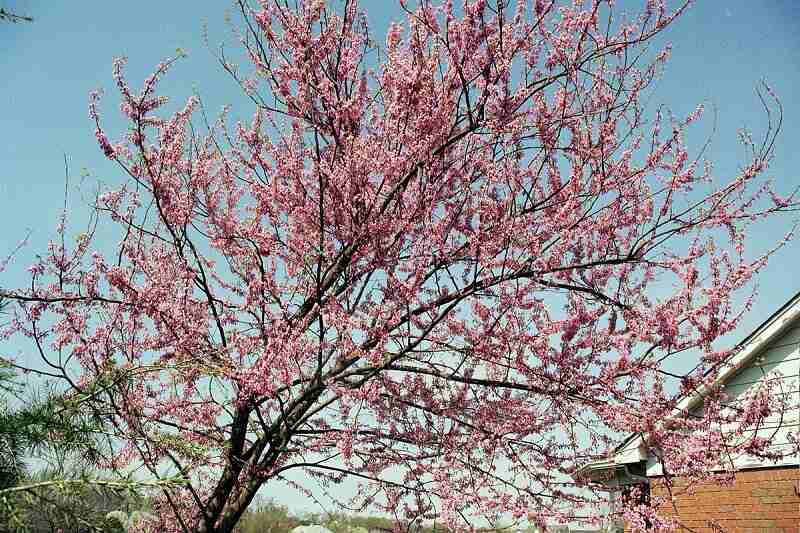
Say hello to Cercis canadensis, the tree that knows how to steal the show in northern Delaware. When spring arrives, it goes all out with its blooming extravaganza. Masses of white, pink, or magenta blooms cover every inch. And guess what? It does all this before most other trees and shrubs even start thinking about blooming.
Here’s the cool part: this tree is perfect for residential landscapes. You can shape it by trimming the lower branches, and voila – you’ve got some light shade. But if you let it do its thing, it will create a colorful and dense privacy screen, much like a flower fortress.
When it comes to feeding the joyful insects, the Eastern Redbud is a little pretentious. Its pea-like flowers hide the nectar deep inside, and only long-tongue bees can reach it. To attract more of these buzzing bodies, mix the redbud with other wildlife-friendly plants.
- Type: Perennial deciduous tree or shrub.
- Best features: Abundant pink flowers and heart-shaped leaves with a purple hue in the spring.
- Blooming time: February-May.
- Size at maturity: 15 to 30 feet tall and 15 to 25 feet wide.
- Sun exposure: Full sun to light shade.
- Soil: Slightly acidic, loamy, moist but well-drained soils.
- USDA hardiness zone: 4 to 9.
Where to buy
15. Smooth Sumac (Rhus glabra)
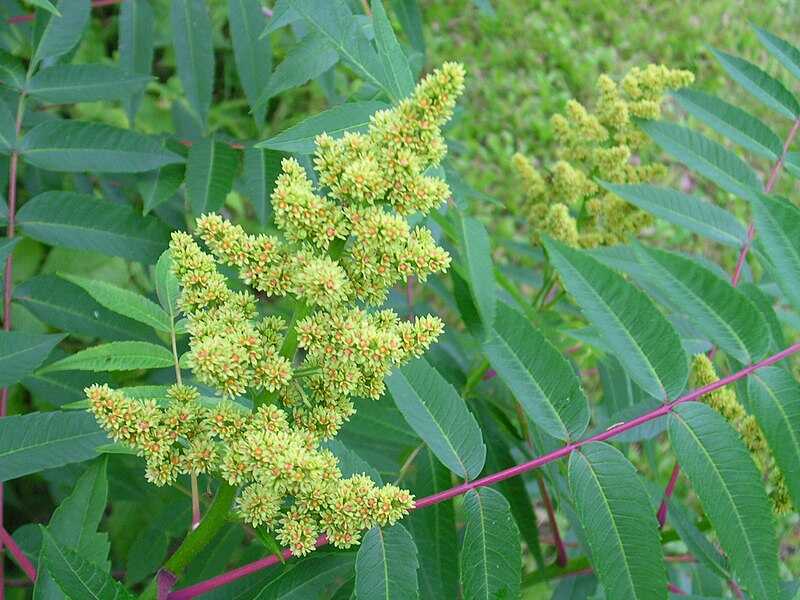
During summer, the smooth sumac dresses in large flower clusters of delicate green or white, but the fall brings out its true colors. Come September, this decorative shrub puts on a breathtaking mass of orange, burgundy, and flame-red leaves that turn any garden into a painting.
Its berrylike drupes add their own pure red and last well into winter, attracting birds and some small mammals in search of food. Landscape designers use it as an accent plant. Another native variety is the winged sumac (Rhus copallinum), growing up to 25 feet tall.
- Type: Perennial, deciduous shrub.
- Best features: Highly ornamental. Clusters of white flowers bloom from late spring to mid-summer, and vibrant red foliage from September through November.
- Blooming time: May-July.
- Size at maturity: 3 to 8 feet tall and 6 to 15 feet wide.
- Sun exposure: Full sun, partial shade, full shade.
- Soil: Thrives in dry soils (sandy, sandy loam, clay loam, clay, caliche), with pH between 6.8 and 7.2.
- USDA hardiness zone: 3 to 8.
Where to buy
16. New Jersey Tea (Ceanothus americanus)
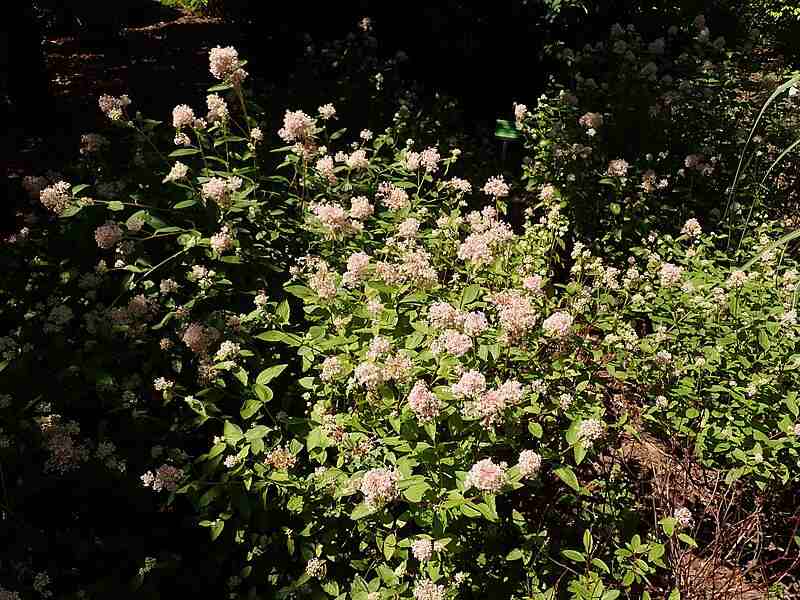
New Jersey tea is perfect for covering the ground and stabilizing slopes in your yard. It’s like a natural carpet with serious holding power due to its deep and strong roots.
During the summer, it blooms bunches of white flowers that are not only showy but also smell amazing. And guess who loves these flowers? Hummingbirds, butterflies, and bees! They can’t resist the delicious New Jersey tea nectar. If you want to create a welcoming space for these amazing creatures, the Ceanothus americanus is a perfect addition to your garden.
- Type: Deciduous shrub.
- Best features: Fragrant small flowers and deep roots.
- Blooming time: May-July.
- Size at maturity: 3 to 4 feet tall and 3 to 5 feet wide.
- Sun exposure: Full sun to partial shade.
- Soil: Well-drained sandy loam and rocky soils. Tolerates dry soils and drought.
- USDA hardiness zone: 4 to 10.
Where to buy
17. Swamp Mallow (Hibiscus moscheutos)
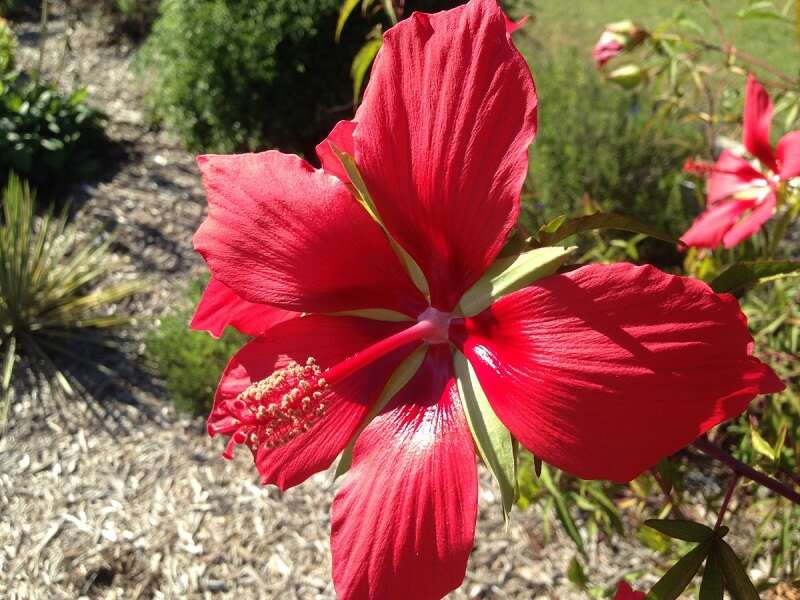
The swamp mallow is a cold-hardy, fast-growing plant with exotic blooms that can make your outdoor space stand out. It puts on a show every summer along the Delaware River and coastal marshes, its natural habitat. But it shines even brighter in the city, in pollinator and cottage gardens.
Its large, white hibiscus flowers open up in July. They cover the entire plant until fall, attracting bees, butterflies, and other friendly bugs.
Hibiscus moscheutos has the special power of turning damp areas in your yard into the most beautiful corners. Its root system is strong enough to handle some flooding. Facing salt sprays easier than other native plants, it is one of the best options to install in wildflower gardens along the coast.
- Type: Perennial forb (flowering plant).
- Best features: Large white flowers covering the plant from summer to fall.
- Blooming time: late July-early September.
- Size at maturity: 3 to 6 feet tall and wide.
- Sun exposure: Full sun.
- Soil: Grows in moist, well-drained loamy and sandy soils and can tolerate some flooding.
- USDA hardiness zone: 4 to 8.
Where to buy
18. Broadleaf Arrowhead (Sagittaria latifolia)
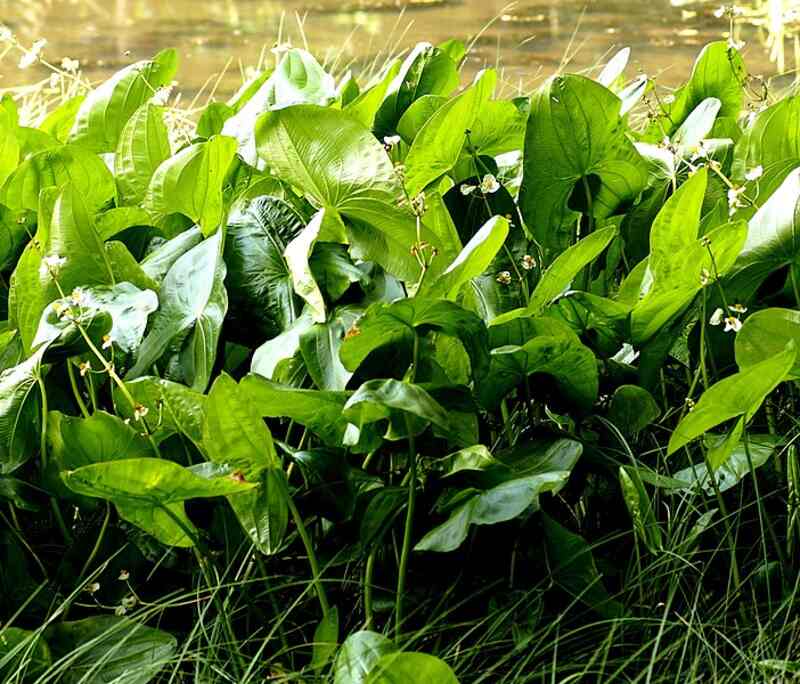
The perfect addition to your garden pond or water garden, these plants have large leaves shaped like arrowheads, sitting on long stems. All summer, they reach up, spreading clusters of elegant white flowers on tall stalks above the water.
Not only do arrowheads enhance the beauty of your water feature, but they also provide a better habitat for wildlife. Animals like swans, geese, muskrats, snapping turtles, and ducks are big fans of arrowheads. They munch on the seeds and edible tubers, which is why arrowheads have fun nicknames like “duck potato” or “swamp potato.”
- Type: Marginal aquatic perennial.
- Best features: Long-blooming white flowers and edible tubers.
- Blooming time: June-September
- Size at maturity: 1 to 4 feet tall and 1 to 3 feet wide.
- Sun exposure: Full sun.
- Soil: It grows in clay, loam, and sandy soils with poor drainage. Tolerates acidic, neutral, and alkaline soils.
- USDA hardiness zone: 5 to 11.
Where to buy
19. Heath Aster (Aster ericoides)
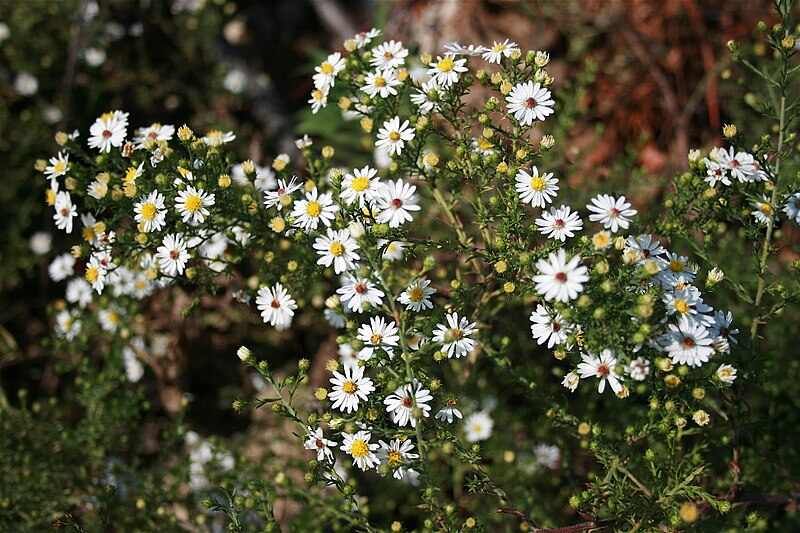
With its dense, needle-like leaves and a bushy or sprawling growth habit, the Heath aster starts by adding a wild charm to your garden. But the real magic happens in late August.
Aster bursts into delicate clouds of small, white flowers that look like adorable chamomile blossoms. And guess what? These lovely flowers just keep on blooming along the stems until October.
As the season starts winding down and nectar becomes scarce, native bees and pollinators rely on this late-blooming wonder for food and even use it as a cozy spot to raise their young. If you want to help these little buddies and improve the wildlife habitat in your yard, plant Heath aster as a colorful ground cover. Just let them spread and create a carpet of stunning flowers.
- Type: Perennial wildflower.
- Best features: Dense foliage and an abundance of small white flowers blooming until late fall.
- Blooming time: August-October.
- Size at maturity: 0.5 to 3 feet tall.
- Sun exposure: Full sun to partial sun.
- Soil: Grows in loamy and sandy soil and tolerates moist to dry terrain. It naturally grows at the edge of the wood and in dry fields.
- USDA hardiness zone: 3 to 10.
Where to buy
Why Choose Native Plants for Your Delaware Garden?
They’re beautiful and diverse, and some have amazing scents or bear delicious fruits. But there’s more to Delaware native plants than this. Here are 5 practical reasons to add indigenous species to your garden.
Well Adapted to Local Weather
Native plants have evolved to thrive in Delaware’s specific weather conditions, including hot summers and cold winters. They can handle extreme temperatures, rainfall patterns, and seasonal changes.
Low Fertilization Needs
Indigenous trees, shrubs, and herbaceous plants are adapted to Delaware’s sandy or loamy soil. Their root systems are designed to access nutrients and moisture from the local soil composition efficiently. Going native makes soil management easier and helps create a more sustainable garden.
Non-native plants may struggle with nutrient deficiencies or drainage problems, requiring extra fertilizers or soil amendments.
Natural Support for Native Wildlife
All native plants are vital in supporting local wildlife and ecosystems. They have established relationships with native insects, birds, and other animals, providing them with food, habitat, and shelter.
Non-native plants may not offer the same level of support to local ecosystems. Including native varieties in your garden, you help preserve Delaware’s unique flora and fauna, promoting a healthier and more balanced environment.
Fewer Pesticides and Fungicides
Native plants have built-in protections against local pests and diseases. They are often better at resisting the common pests and diseases in the area, so you don’t have to use as many chemicals or spend too much time maintaining them.
On the other hand, non-native plants often lack these natural defenses and can be more easily attacked by pests and diseases. This means you would need to monitor them frequently and intervene more often. By choosing native plants, you create a stronger and more sustainable garden that requires fewer pesticides and fungicides.
Water Conservation
Native plants in Delaware are a good match for the local rainfall patterns. Once established, they don’t need as much watering because their roots can effectively capture and hold water. This ability to save water is important for keeping the environment balanced and preserving local water resources. By including native plants in your garden, you can help save water and support sustainable gardening practices.
How to Choose the Right Native Plants for You
There are dozens of trees, shrubs, and wildflowers native to Delaware, and deciding which ones to plant can be a time-eater. Here are five criteria to pinpoint the best ones for your garden.
Blooming Time
Choose your plants considering the blooming time, and you can create a garden filled with flowers and perfume from early spring to late fall. All you must do is mix varieties that bloom at different times during the year. For example, you can plant:
- Wild Blue Lupine (blooms from May to June)
- Black Eyed Susan (blooms from June to July)
- Sweet Goldenrod (blooms from July to October)
- New York Iron Weed (blooms from August to September)
Some beautiful trees to consider for their stunning fall color are Sassafras (Sassafras albidum), Scarlet Oak (Quercus coccinea), Sweetgum (Liquidambar styraciflua), White Ash (Fraxinus americana), and Sugar Maple (Acer saccharum).
Diversity
Choose different bloom colors, leaf textures, plant types, and sizes to create an interesting garden with depth and beautiful focal points. You can choose a colorful rainbow look or a more elegant combination in similar shades. We have a practical guide to mixing wildflowers, and you can also hire a landscape designer to help you with the details.
Annuals or Perennials
Native perennials like echinacea, smooth sumac, or Heath aster are less work because they come back every year without any intervention on your part. They also keep weeds at bay easier.
On the other hand, annual plants need reseeding each spring and periodical weeding. They also give you more flexibility and the option of changing something in your garden every year.
Deciduous or Evergreen
When picking shrubs and trees, imagine your yard during winter. If you see that green vibe going strong all year round, here’s a list of native evergreens to have in mind:
- Evergreen shrubs under 10 feet tall: Creeping Juniper (Juniperus horizontalis), Inkberry (Ilex glabra), Mountain Laurel (Kalmia latifolia), Piedmont Rhodendron (Rhododendron minus), Drooping Leucothoe (Leucothoe fontanesiana), and Mountain Pieris (Pieris floribunda).
- Evergreen trees 20 to 40 feet tall: Virginia Pine (Pinus virginiana), Eastern Arborvitae (Thuja occidentalis), Eastern Redcedar (Juniperus virginiana), and American Holly (Ilex opaca).
- Evergreen trees over 40 feet tall: Atlantic Whitecedar (Chamaecyparis thyoides), Canadian Hemlock (Tsuga canadensis), Sweetbay Magnolia (Magnolia virginiana), and White Pine (Pinus strobus).
Deciduous trees, on the other hand, will lose their leaves in fall and stay bare in winter. If you’re looking for showy fall colors, deciduous trees are the way to go.
Ecotypes
Look for seeds gathered from locally grown plants or seedlings grown from such seeds. Try to avoid seeds and specimens from other parts of the country.
If you want to support the local ecosystem by providing food and shelter for native bees, staying away from hybrids is also a good idea. Though often with larger flowers or prolonged blooming time, they are less rich in nectar and pollen.
FAQ
Some of the most popular native shade trees you can add to your Delaware yard are:
• Pin Oak (Quercus palustris)
• Willow Oak (Quercus phellos)
• Red Oak (Quercus rubra)
• Honeylocust (Gledistis triacanthos)
• Kentucky Coffee Tree (Gymnocladus dioicus)
• Basswood (Tilia americana)
• Bur Oak (Quercus macrocarpa)
• White Oak (Quercus alba)
Some of the best native plants for wet meadows and ponds in Delaware are swamp milkweed, common boneset, giant sunflower, New England aster, blue vervain, and great blue lobelia.
For properties prone to drought, some of the best native plants in Delaware are common milkweed, partridge pea, yellow wild indigo, wild bergamot, spotted horsemint, and wild blue lupine.
The best grass seeds for keeping a healthy, green lawn in Delaware’s climate are tall fescue, fine fescues, Kentucky bluegrass, and perennial rye. The warm-season grass Zoysia is also an option for summer lawns.
Once you’ve planted the right type of grass, see our lawn care tips for Delaware to keep it healthy and green all year.
Make Your Delaware Garden Bloom with Native Beauty!
Now you’re armed with the knowledge of some wonderful native plants. It’s time to take action. Contact your local landscape experts and watch your garden transform into a vibrant, sustainable oasis that will be the envy of the neighborhood.
Whether you’re living in Wilmington, New Castle, or Newark, seize the opportunity to connect with LawnStarter landscape professionals who understand your specific area’s unique requirements and possibilities. They can help you unleash the full potential of native plants in your garden, creating a visually stunning and environmentally friendly outdoor space.
Let’s make Delaware’s landscapes bloom with native beauty!
Main Image Credit: peganum / Wikimedia Commons / CC BY-SA 2.0
LawnStarter participates in the Amazon Services LLC Associates Program and other affiliate advertising programs. LawnStarter may earn revenue from products promoted in this article.
